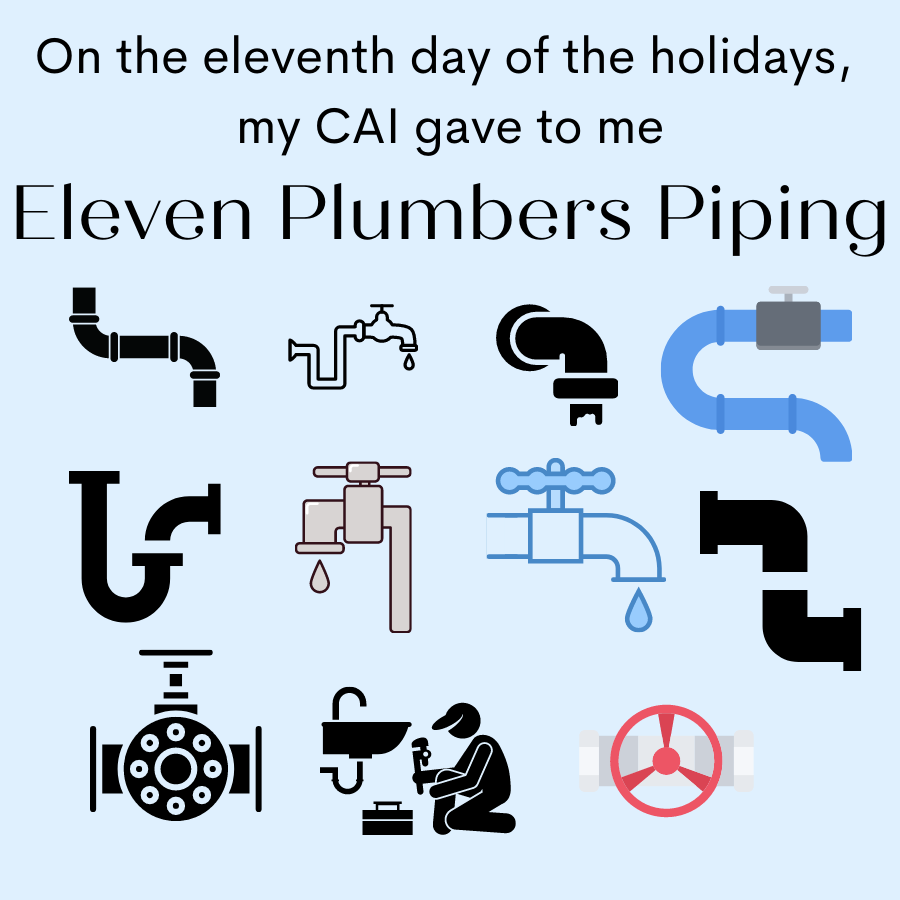- Home
- Eleven Plumbers Piping

Plumbing Tips
Courtesy of Renee Aldrich, Paragon
- 1. Maintain Your Kitchen sink – Maintain your kitchen sink by minimizing the grease that might likely build up in the sink by using a strainer to take the greasy substance and dispose of it in the trash instead of allowing it to run down the drain. Enzyme-based cleaners provide a great solution to clear clogged pipes.
- 2. Be careful what you flush or pour down the drain! – The problem with drains and toilets is that so many things can get flushed down them. The easiest way to prevent problems with your pipes is to be careful what you flush or pour down them to begin with. No diapers, no so-called “flushable” wipes (no matter what the package says!), no feminine hygiene products, no paper towels, no kitty litter and absolutely no food. Do not flush anything other than toilet paper and human waste down the toilet.
- 3. Clean Every Drain Every Month – So, you should clean your drains monthly, using an enzyme-based cleaner—not a chemical-based one that can damage your pipes. If you prefer a homemade solution, send some baking soda and vinegar down the drain, let the combination work its magic for 15 minutes or so, and then rinse with boiling water.
- 4. Use Your Garbage Disposal Sparingly – Grease is one of many things you should not put down your kitchen sink. Pasta, rice, fibrous or starchy veggies like celery and potatoes, eggshells, and coffee grounds should also be off-limits. Think of your garbage disposal more like a “crumb dispenser” and your plumbing will be better for it.
- 5. Avoid Frozen Pipes – Before winter sets in, try and winterize the plumbing so that it can withstand the extreme cold conditions. Wrap water pipes located in un-insulated/unheated areas like those in the garage, crawl space or basement with heat tape or foam insulation. Remove hoses from outdoor spigots in winter to prevent frozen water from cracking the pipes and causing a flood.
- 6. Keep a close eye on your water heater – A leaky heater can lead to lots of problems so ensure that it is properly maintained. Over time your water heater can get sediment in it and become less effective. You can reduce the problems by draining it every season to avoid sediment that might lead to failure of your heater.
- 7. Fix leaking faucets and showerheads – Dripping faucets can waste a lot of water and that can add to your bill. And if you don’t fix a dripping faucet or showerhead, the drip can get worse over time. Those problems can cause water damage. To prevent problems, check your facets regularly for leaks and make repairs as needed. Check the handles to make sure no water drips when the handles are turned to the off position and check underneath the sinks for water stains or drips when the water is running.
- 8. Check all exposed pipes and appliances for water leaks – Your disposal, refrigerator, or water heater can be the source of a leak. Look at any manufacturer’s requirements for maintaining your appliances. Watch for visible signs of a leak such as water stains on walls and ceilings, or puddles of water. Also be wary of mildew. Installing a drip tray underneath your water heater and washing machine can help limit damage if a leak were to occur.
- 9. Fix leaking toilets – Sometimes a faulty seal around the valve seat can cause your toilet to run even when it is not flushed. Over time, gunk will form around the valve seat and flapper. This gunk will prevent the flapper to seal properly, which will cause the water to continue to run. Another problem could be with the handle or tank stopper. The repair that is needed is often quick and inexpensive maintenance.
- 10. Avoid Problems with your washing machine – Check the hoses for signs of cracks, brittleness, or leaking. Replace your hoses as needed. Clean out the washing machine filter.
- 11. Water Shut Off Valve – Locate where your shut-off valve is before you actually need to use it. In an emergency situation, this valve will shut off the water to your entire home or business. Make sure you close and open your shut-off valve periodically to ensure it’s not stuck in the “open” position.
